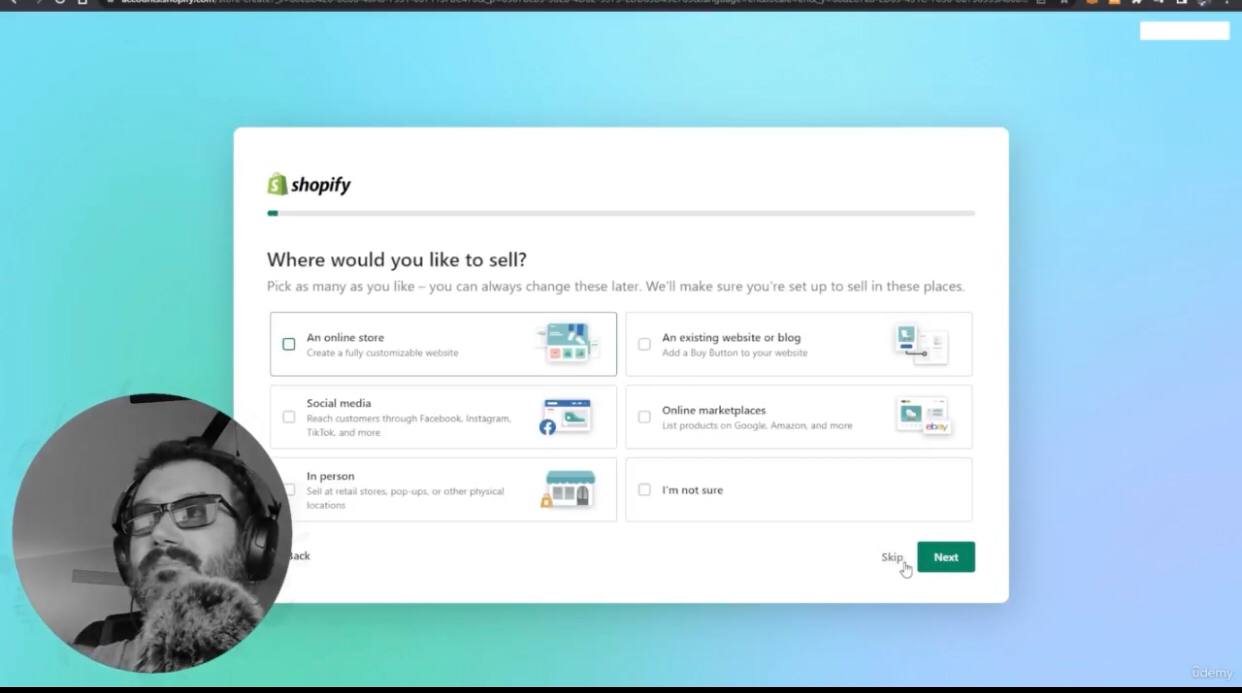Quickly and easily create your own Shopify dropshipping store.
Written by BLOGDAY Updated at May 23, 2024 | Reading time: 1
Introduction:
In the large area of e-commerce, diving has become a very profitable business method, allowing entrepreneurs to create their own online store with an initial investment. Shopify, with its user-friendly interface and powerful features, has become a popular place for building dropshipping stores. In this comprehensive guide, we'll walk you through every step of creating and upgrading your Shopify store, from initial setup to advanced setup and upgrades.
Creating a store:
The first step to setting up your empire is to sign up for Shopify. Get started by visiting Shopify's website and choosing the right plan that fits your business goals and budget. Once registered, you will be guided through the process of creating your store. Choose a unique and memorable domain name that reflects your brand identity. Next, choose an eye-catching theme from Shopify's collection or explore other options for additional customization. Optimize your logo, customize colors, fonts and layouts to create an attractive and attractive price tag that resonates with your target audience.
General store layout:
With the structure of your store in place, it's time to dive into the general setup. Visit the Shopify dashboard and explore the different options available. Customize important settings like currency, language, and units of measurement to meet your target market. Customize shipping zones and rates to accurately reflect your shipping costs and delivery times. In addition, adjust the tax base to comply with local regulations and ensure price transparency for your customers.
Payment start:
Streamline the checkout process by integrating a secure payment gateway with your store. Shopify offers several payment options, including Shopify Payments, PayPal, Stripe, and more. Choose the payment providers that will best meet your business needs and meet the needs of your customers. Follow the step-by-step instructions provided by Shopify to properly configure each payment gateway. Make sure your customer payment information is protected with SSL encryption and PCI compliance standards.

Installing the necessary applications:
Improve the functionality of your Shopify store by installing essential apps from the Shopify App Store. Explore a variety of tools designed to improve operations, enhance marketing efforts, and improve customer experience. Consider installing an app like Oberlo or Spocket for seamless product management and inventory control. Implement email marketing tools like Klaviyo or Omnisend to improve customer relationships and drive repeat purchases. Use tools like Loox or FOMO to use social proof to drive conversions and increase sales. Configure the domain and shipping options:
Create your brand's online presence by creating a custom domain for your Shopify store. Buy domains directly from Shopify or connect existing domains for a seamless transition. Verify domain permissions and configure DNS settings to ensure smooth browsing of your store. During this time, adjust your shipping options to provide competitive rates and delivery methods that meet customer expectations. Explore fulfillment services like Shopify Fulfillment Network or other logistics providers for efficient fulfillment and on-time delivery.
Theme Design:
Improve the visibility of your Shopify store with advanced theme design. Dive into the theme editor to edit CSS, HTML and Liquid Code to customize the design to fit your brand. Experiment with layout changes, text changes, and color combinations to create unique and immersive shopping experiences. Add responsive elements to optimize your store for mobile devices and ensure a great browsing experience on all screen sizes. Optimization for SEO:
Increase your store's visibility and organic traffic by optimizing it for search engines. Create keyword research to identify relevant search terms and add structure to your product title, description and meta tags. Create engaging and informative content, such as blog posts or product guides, to attract and engage your audience. Improve image alt text, URL structure, and internal links to improve crawling and indexing by search engine bots. Regularly monitor your store performance using analytics tools like Google Analytics or Shopify's built-in analytics dashboard to track key metrics and identify areas for improvement.
Conclusion:
In conclusion, building a successful Shopify store requires careful planning, process execution, and continuous improvement. By following the steps outlined in this comprehensive guide, you will be well prepared to create an online store that attracts customers, increases sales, and establishes your brand's presence in the e-commerce space. competition. Connect with new industry trends, experiment with new strategies, and drive customer satisfaction to unlock the full potential of your shipping business. With dedication and perseverance, you can turn your Shopify store into a thriving business that generates sustainable income and long-term success.
THE LINK IS HERE :
CLICK HERE
Tags
Search
Categories
Latest posts
كورس صناعة الفيديو والكولاج في الافترافكت كورس احترافي
Nov 14, 2024 | Arabic blog
6 Weeks Bootcamp for Civil & Construction Engineer from Zero
Nov 14, 2024 | Business & Entrepreneurship
Cyber Security: Anti-Virus
Nov 12, 2024 | Cybersecurity
Simple React App from Scratch
Nov 12, 2024 | Web Development
دليل التسويق بالعمولة النهائي لإتقان الربح [عربي]
Nov 10, 2024 | Arabic blog